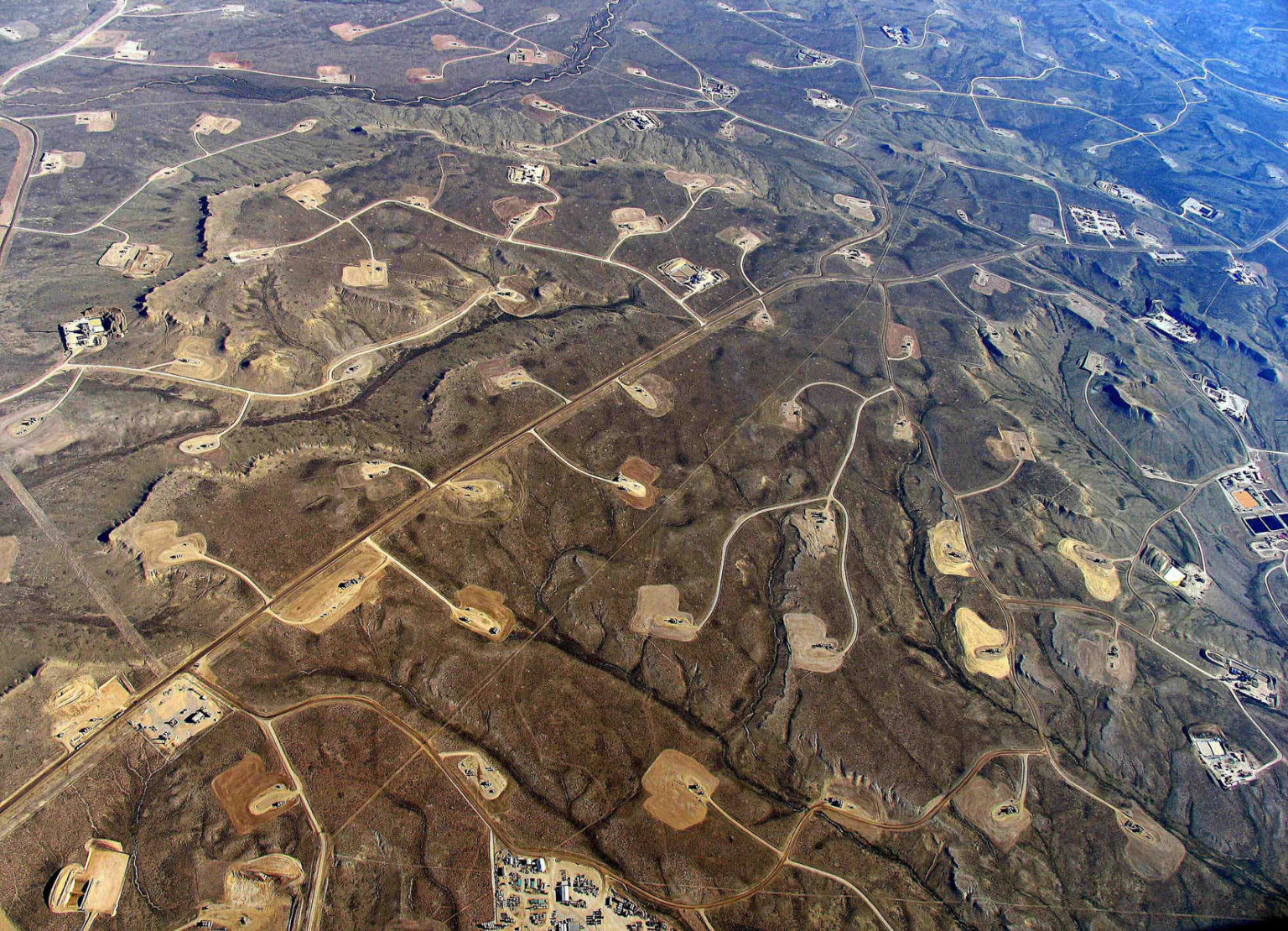In 2016, lower oil prices led to an overall drop in production for shale companies, which use horizontal drilling and fracking to extract oil and gas from shale formations such as the Marcellus and Permian. This was one of the few relatively positive financial periods for an industry plagued by high costs and low returns (although it still lost money in 2016).
But the industry shouldn’t get complacent, warned Robert Clarke of energy industry research and consulting group Wood Mackenzie. Cracks already are starting to emerge in the optimistic forecasts of how much these shale formations can produce, which is a bad sign for turning around the industry’s struggling finances.
“It was only the best rigs, with the most experienced crews, drilling the best rock at the lowest service costs,” which were doing well in 2016, said Clarke at the 2018 Energy Information Administration (EIA) annual conference in June. “If you are a producer, it’s very dangerous to think that that is the new norm.”
But producers seemed to think it was the new normal and plowed ahead, going all in on fracking in the Permain Basin, currently seen as the best shale play in the country.
Granted, the results have been impressive from a production standpoint. The EIA expects “Permian regional production to average 3.3 million [barrels per day] in 2018 and 3.9 million [barrels per day] in 2019.” Those numbers may reach 5.4 million barrels a day by 2023, according to oil industry consultants IHS Markit.
While the Permian’s oil production has been prolific, it hasn’t translated into profits. “Why Aren’t Permian Oil Producers Profitable?” asked a headline on industry publication Oilprice.com this past May.
As DeSmog’s series on the finances of fracking has documented, there is no doubt fracking can lead to production of large volumes of light oil, but it comes at the cost of approximately a quarter trillion dollars more than the industry has made since 2007.
World’s Largest Oil Services Company CEO Offers Dire Warning for Frackers
As the world’s largest oil services company, Schlumberger has an intimate knowledge of what it takes to produce oil by fracking across the many shale formations currently being drilled.
Its CEO, Paal Kibsgaard, cautioned industry analysts on a recent phone conference, sounding quite like the warning from Clarke in June.
“The well-established market consensus that the Permian can continue to provide 1.5 million barrels per day of annual production growth for the foreseeable future is starting to be called into question,” Kibsgaard said, according to the Financial Times.
Kibsgaard’s main concern touches on a phenomenon known as “child wells,” a situation I reported for DeSmog in August.
The concept is simple. All shale formations are not created equal, which means to make money, producers need to find “good rock,” or what is also known in the industry as “sweet spots.”
Pumpjack located south of Midland, Texas. Credit: Eric Kounce, TexasRaiser, public domain
But there are limited sweet spots. And the industry is drilling too many “child wells” in established sweet spots around “parent wells” that are producing, hoping to capitalize on that “good rock.” But, as I explained, the approach isn’t working, and in some cases is even costing the industry more money by damaging the existing wells in those sweet spots.
But that raises a simple question: If the shale industry has an abundant enough supply of good rock to support the rosy predictions of groups like IHS, why are companies instead drilling so many child wells around a few sweet spots instead of moving on to drill other, new sweet spots?
Perhaps the industry doesn’t have other sweet spots to move on to and perhaps instead is trying to stave off looming bankruptcy from the tremendous debt loads they are carrying?
Kibsgaard explained his skeptical view of the Permian basin’s future production, saying that in the Eagle Ford shale play — where production is well below its peak in 2015 — “up to about 70 percent of all new wells drilled” are child wells. This trend indicates that producers there have run out of new “good rock” and are trying to get every last bit from the known sweet spots.
Meanwhile, in the Permian’s Midland Wolf Camp section, child wells are already approaching 50 percent of new wells drilled, said Kibsgaard, and the results appear to follow the same trajectory as the Eagle Ford.
“We are already starting to see a similar reduction in unit well productivity to that already seen in the Eagle Ford suggesting that the Permian growth potential could be lower than earlier expected,” warned Kibsgaard.
This is the message from the CEO of the biggest oilfield services company to investment analysts. Will anyone listen?
Some Fracking CEOs Make Similar Warnings
Schlumberger isn’t in the business of drilling for oil, just supporting the companies that do. So putting forth rosy projections for the future to keep investors engaged isn’t required — like it may be for fracking companies deeply in debt and unable to turn a profit at current production levels. Promises of huge profits in the future are really the only likely reason for anyone to invest in fracking companies.
But even some fracking CEOs don’t believe the optimistic forecasts for the Permian. In Bethany McLean’s excellent new book Saudi America: The Truth About Fracking and How It’s Changing the World, she speaks to two of the fracking CEOs who have actually had success in the industry — Bill Thomas and Mark Papa.
Bill Thomas, current CEO of EOG (formerly known as Enron Oil and Gas), one of the few fracking companies making money, tells McLean that in the Permian the “really good rock” is smaller than the industry optimists are saying. This helps explain the surge in child wells where the industry is trying to over-drill what good rock there is.
Thomas goes on to explain to McLean: “The Permian has terrified the world oil market but there are overblown expectations of the Permian.” “Terrified” because if the Permian actually manages to produce 5.7 million barrels per day, it would be producing a higher volume of oil than every country except the U.S., Saudia Arabia, and Russia in 2017.
Oil traders and producers don’t like to be surprised and having a new oil supply of that magnitude come out of almost nowhere fits that bill. But as Thomas is warning, those fears may not be fully justified.
Mark Papa is the former CEO of EOG and now runs Centennial Resource Development. Papa actually delivered his less-than-sunny message at the 2018 IHS Markit annual oil industry conference known as CERAweek, but apparently it wasn’t what the audience wanted to hear.
“There are good geological spots in shale plays and weaker geological spots, and a lot of the good geological spots have already been drilled,” Papa explained during a panel discussion.
In Saudi America, McLean reports that Papa had said that by 2020, even in the Permian, the best acreage will have been mostly drilled and he predicted a sizable dropoff in production to follow.
Time Running out for Frackers in Deep Debt
At current oil prices, most fracking companies are losing money while trying to get every last drop out of the known sweet spots in American shale plays. Under these conditions, the industry is having a hard time accepting that what Papa, Thomas, and Kibsgaard are saying could be true. These companies can’t hope to pay back their massive debts if the best days of the major shale plays are either in the past or rapidly approaching.
So, who will be right? For nearly a decade, the fracking industry has been promising that profits are just on the horizon, but they have not materialized — not even in the ideal 2016 scenario described by Wood Mackenzie’s Clarke.
Has the industry run out of good rock? In her book, McLean quotes one industry investor, whose words should strike fear into the hearts of those invested in or holding debt for shale companies.
“Our view is that there’s only five years of drilling inventory left in the core,” one prominent investor told McLean, whose book was just published in September 2018. “If I’m OPEC, I would be laughing at shale. In five years, who cares?”
Main image: Wyoming’s Jonah gas field is marked by a network of well pads, roads, and pipelines. Credit: Bruce Gordon, EcoFlight, CC BY 2.0
Subscribe to our newsletter
Stay up to date with DeSmog news and alerts







